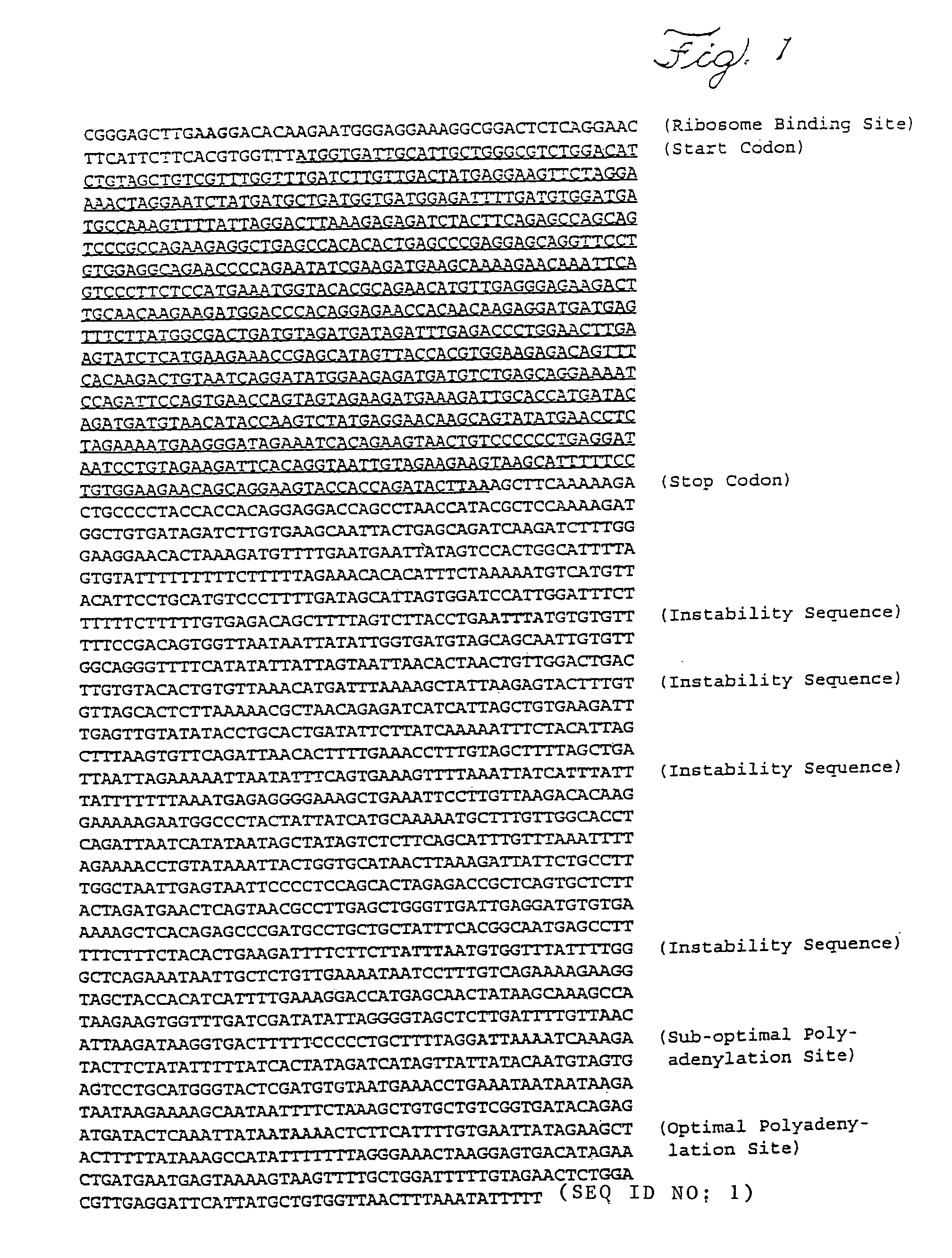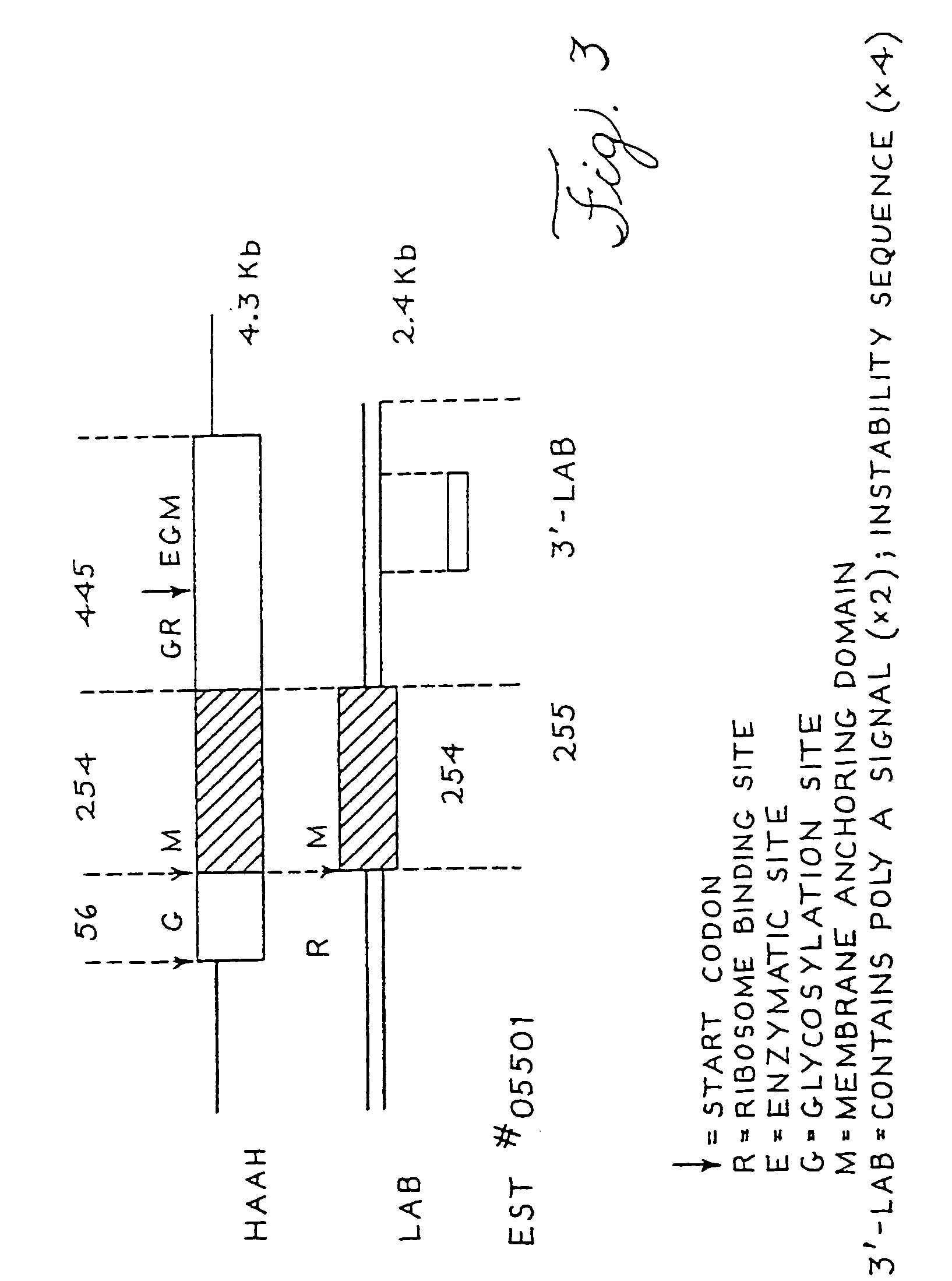Gene encoding labyrinthin, a marker for cancer
a gene encoding and cancer technology, applied in the field of gene encoding labyrinthin, can solve the problems of affecting the treatment of cancer, affecting the survival rate of patients,
- Summary
- Abstract
- Description
- Claims
- Application Information
AI Technical Summary
Benefits of technology
Problems solved by technology
Method used
Image
Examples
Embodiment Construction
[0034]Molecular Biology of Labyrinthin: To demonstrate that the epitope MCA 44-3A6 is encoded by a protein sequence, high molecular weight DNA from the cell line A549 was isolated. This DNA was co-precipitated (via calcium) with a plasmid (pSVneo), and used to transfect a mouse cell line designated B78H1 cells (Albino, et al., 1985). This mouse cell line is negative for the expression of the epitope and was reported to have a high frequency of incorporation and expression of any human DNA sequences. If a given B78H1 cell was in a state to take up DNA, it would be expected to have taken up both human DNA and the plasmid DNA. The plasmid DNA makes the cell resistant to G418 (a normally toxic drug). Therefore, if a cell normally sensitive to G418 growth inhibitor grows in G418, it had to have taken up the plasmid, and may also have taken up one or more A549 DNA sequences. After G418 selection (a way of choosing only cells which have resistance to growth in G418 by the uptake / expression...
PUM
| Property | Measurement | Unit |
|---|---|---|
| molecular weights | aaaaa | aaaaa |
| molecular weights | aaaaa | aaaaa |
| molecular weights | aaaaa | aaaaa |
Abstract
Description
Claims
Application Information
 Login to View More
Login to View More - R&D
- Intellectual Property
- Life Sciences
- Materials
- Tech Scout
- Unparalleled Data Quality
- Higher Quality Content
- 60% Fewer Hallucinations
Browse by: Latest US Patents, China's latest patents, Technical Efficacy Thesaurus, Application Domain, Technology Topic, Popular Technical Reports.
© 2025 PatSnap. All rights reserved.Legal|Privacy policy|Modern Slavery Act Transparency Statement|Sitemap|About US| Contact US: help@patsnap.com



